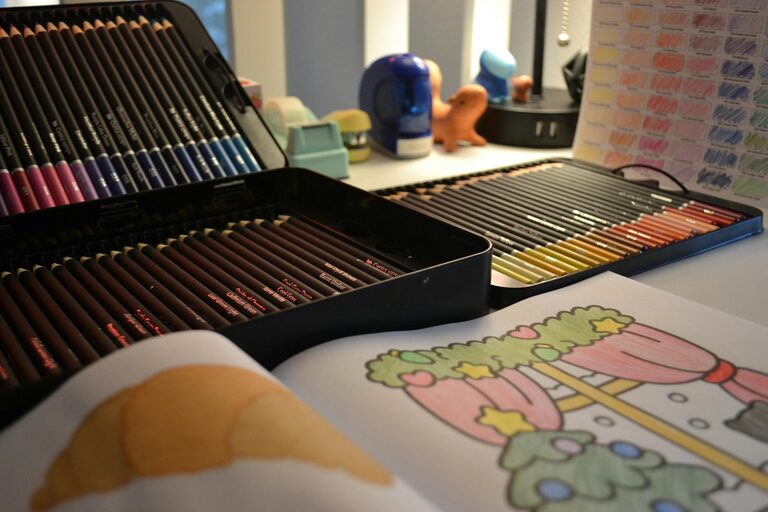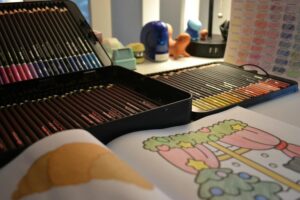Simple Ways to Practice Creativity Every Day

Creativity isn’t just for artists or writers; it’s a skill that anyone can develop and enjoy. Practicing creativity every day can make problem-solving easier, enhance your mood, and add excitement to routine tasks. The good news is, you don’t need special tools or training to begin. With some simple habits and a little intention, you can nurture your creative side daily.
In this post, we’ll explore straightforward ways to make creativity a regular part of your life. Whether you’re looking to spark new ideas at work or simply want to add more color to your day, these tips will help you get started.
Why Practice Creativity Daily?
Creativity is like a muscle—the more you use it, the stronger it becomes. Daily creative practice can:
– Improve your ability to think outside the box
– Boost your confidence in expressing ideas
– Reduce stress by providing an enjoyable mental break
– Enhance your problem-solving skills
With these benefits in mind, let’s dive into ways to bring more creativity into your daily routine.
Simple Daily Habits to Boost Creativity
1. Keep a Journal or Sketchbook
Writing or drawing regularly encourages your mind to explore new ideas and reflect on your experiences.
– Spend 5–10 minutes each day jotting down thoughts, dreams, or observations.
– Try doodling or sketching even if you don’t consider yourself an artist.
– Use prompts like “What inspired me today?” or “If I could change one thing, what would it be?”
This habit can clear mental clutter and make space for fresh ideas.
2. Change Your Environment
Sometimes a new setting can spark creativity.
– Work from a different room, visit a park, or rearrange your workspace.
– Rearranging your furniture or adding plants can bring fresh energy to your surroundings.
– Even small changes, like switching your route for a daily walk, can stimulate new thoughts.
3. Embrace Mindfulness and Observation
Being present helps you notice details that inspire creativity.
– Practice mindful breathing or short meditation sessions to calm your mind.
– Pay attention to your surroundings: colors, sounds, textures, and smells.
– Take photos or make notes about things that catch your eye.
This awareness can fuel creative ideas and deepen your appreciation of everyday life.
4. Try New Activities or Skills
Learning something new challenges your brain and encourages creative thinking.
– Pick up a musical instrument, try cooking a new recipe, or experiment with crafts.
– Attend workshops, watch tutorials, or explore online classes.
– Even small efforts, like writing a poem or building a simple DIY project, count.
5. Limit Screen Time and Digital Distractions
Too much screen time can dampen creativity by constantly feeding your brain information.
– Set aside specific times for checking emails or social media.
– Keep periods of “digital detox” to focus on creative activities.
– Use this time to read books, brainstorm ideas, or simply daydream.
6. Collaborate and Share Ideas
Creativity often flourishes through interaction with others.
– Talk to friends or colleagues about your projects or ideas.
– Join creative groups online or locally, such as writing circles or art clubs.
– Be open to feedback and try combining different viewpoints.
7. Create a Routine but Stay Flexible
Designate time in your day dedicated to creative work but don’t pressure yourself too much.
– Even 10–15 minutes of focused creative time is beneficial.
– Keep a flexible attitude; creativity can ebb and flow.
– Celebrate small wins rather than expecting perfection.
Tips to Overcome Creative Blocks
Everyone experiences moments when ideas won’t come. Here are some ways to keep moving forward:
– Change your task: Switch to a different creative activity to refresh your mind.
– Take breaks: Step away for a walk or relaxation to reset your thinking.
– Use prompts: Writing prompts, photo challenges, or creative exercises can kickstart ideas.
– Avoid judgment: Give yourself permission to create without worrying about results.
Final Thoughts
Practicing creativity every day doesn’t have to be complicated or time-consuming. By integrating simple habits like journaling, changing your environment, and trying new activities, you build a foundation for sustained creative growth. Remember, creativity thrives on curiosity and play—not on pressure or perfection.
Start small, keep an open mind, and enjoy the process of discovering new ways to express yourself. Over time, you’ll find creativity becoming a natural and rewarding part of your daily life.
Happy creating!




